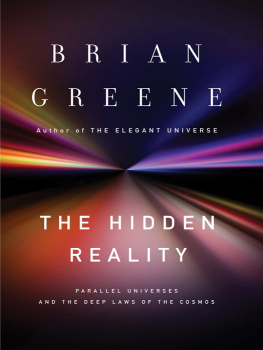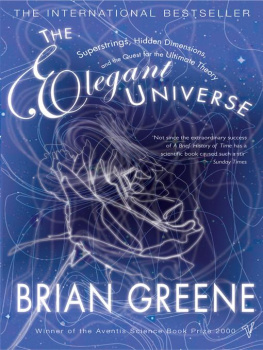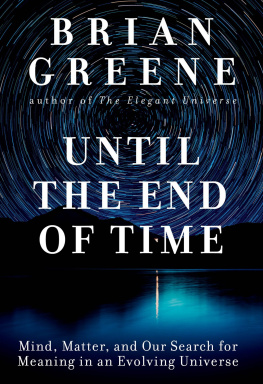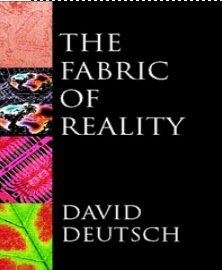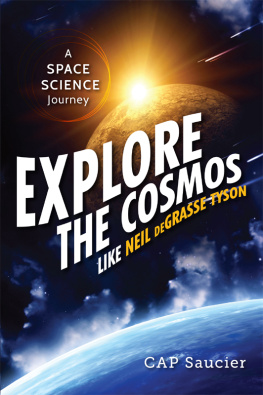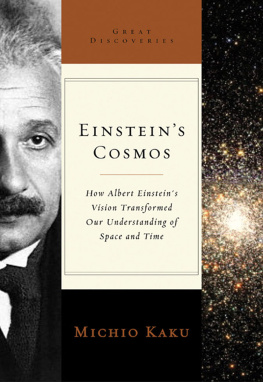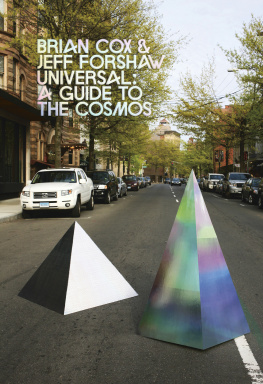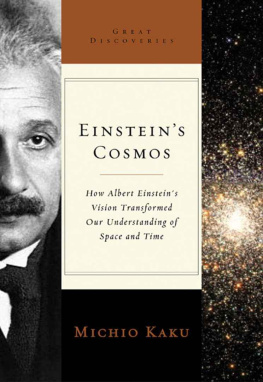Brian Greene - The Fabric of the Cosmos (Space, Time and the Texture of Reality)
Here you can read online Brian Greene - The Fabric of the Cosmos (Space, Time and the Texture of Reality) full text of the book (entire story) in english for free. Download pdf and epub, get meaning, cover and reviews about this ebook. year: 2004, genre: Science fiction. Description of the work, (preface) as well as reviews are available. Best literature library LitArk.com created for fans of good reading and offers a wide selection of genres:
Romance novel
Science fiction
Adventure
Detective
Science
History
Home and family
Prose
Art
Politics
Computer
Non-fiction
Religion
Business
Children
Humor
Choose a favorite category and find really read worthwhile books. Enjoy immersion in the world of imagination, feel the emotions of the characters or learn something new for yourself, make an fascinating discovery.

- Book:The Fabric of the Cosmos (Space, Time and the Texture of Reality)
- Author:
- Genre:
- Year:2004
- Rating:3 / 5
- Favourites:Add to favourites
- Your mark:
- 60
- 1
- 2
- 3
- 4
- 5
The Fabric of the Cosmos (Space, Time and the Texture of Reality): summary, description and annotation
We offer to read an annotation, description, summary or preface (depends on what the author of the book "The Fabric of the Cosmos (Space, Time and the Texture of Reality)" wrote himself). If you haven't found the necessary information about the book — write in the comments, we will try to find it.
The Fabric of the Cosmos (Space, Time and the Texture of Reality) — read online for free the complete book (whole text) full work
Below is the text of the book, divided by pages. System saving the place of the last page read, allows you to conveniently read the book "The Fabric of the Cosmos (Space, Time and the Texture of Reality)" online for free, without having to search again every time where you left off. Put a bookmark, and you can go to the page where you finished reading at any time.
Font size:
Interval:
Bookmark:
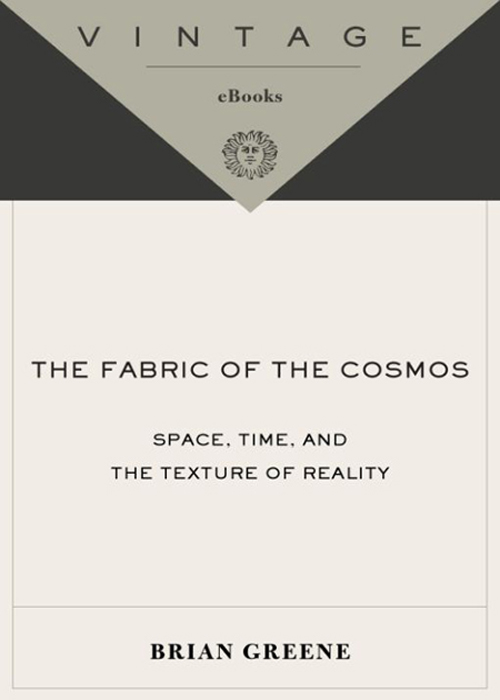
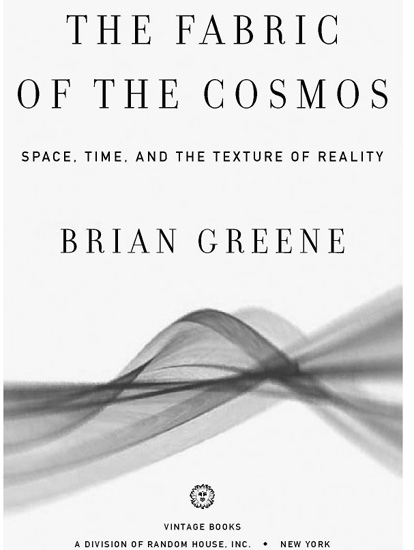
Table of Contents
To Tracy
Praise for Brian Greenes THE FABRIC OF THE COSMOS
As pure intellectual adventure, this is about as good as it gets.... Even compared with A Brief History of Time, Greenes book stands out for its sweeping ambition... stripping down the mystery from difficult concepts without watering down the science. Newsday
Greene is as elegant as ever, cutting through the fog of complexity with insight and clarity. Space and time, you might even say, become putty in his hands. Los Angeles Times
Highly informed, lucid and witty.... There is simply no better introduction to the strange wonders of general relativity and quantum mechanics, the fields of knowledge essential for any real understanding of space and time. Discover
The authors informed curiosity is inspiring and his enthusiasm infectious. KansasCity Star
Mind-bending.... [Greene] is both a gifted theoretical physicist and a graceful popularizer [with] virtuoso explanatory skills. TheOregonian
Brian Greene is the new Hawking, only better. TheTimes (London)
Greenes gravitational pull rivals a black holes. Newsweek
Greene is an excellent teacher, humorous and quick.... Read [to your friends] the passages of this book that boggle your mind. (You may find yourself reading them every single paragraph.) TheBoston Globe
Inexhaustibly witty... a must-read for the huge constituency of lay readers enticed by the mysteries of cosmology. The Sunday Times
Forbidding formulas no longer stand between general readers and the latest breakthroughs in physics: the imaginative gifts of one of the pioneers making these breakthroughs has now translated mathematical science into accessible analogies drawn from everyday life and popular culture.... Nonspecialists will relish this exhilarating foray into the alien terrain that is our own universe. Booklist (starred review)
Holds out the promise that we may one day explain how space and time have come to exist. Nature
Greene takes us to the limits of space and time. TheGuardian
Exciting stuff.... Introduces the reader to the mind-boggling landscape of cutting-edge theoretical physics, where mathematics rules supreme.TheNews & Observer
One of the most entertaining and thought-provoking popular science books to have emerged in the last few years. The Elegant Universe was a Pulitzer Prize finalist. The Fabric of the Cosmos deserves to win it.PhysicsWorld
In the space of 500 readable pages, Greene has brought us to the brink of twenty-first-century physics with the minimum of fuss. TheHerald
If anyone can popularize tough science, its Greene.EntertainmentWeekly
Greene is a marvelously talented exponent of physics.... A pleasure to read. Economist
Magnificent... sends shivers down the spine. FinancialTimes
This is popular science writing of the highest order.... Greene [has an] unparalleled ability to translate higher mathematics into everyday language and images, through the adept use of metaphor and analogy, and crisp, witty prose.... He not only makes concepts clear, but explains why they matter. PublishersWeekly (starred review)
Preface
Space and time capture the imagination like no other scientific subject. For good reason. They form the arena of reality, the very fabric of the cosmos. Our entire existenceeverything we do, think, and experience takes place in some region of space during some interval of time. Yet science is still struggling to understand what space and time actually are. Are they real physical entities or simply useful ideas? If theyre real, are they fundamental, or do they emerge from more basic constituents? What does it mean for space to be empty? Does time have a beginning? Does it have an arrow, flowing inexorably from past to future, as common experience would indicate? Can we manipulate space and time? In this book, we follow three hundred years of passionate scientific investigation seeking answers, or at least glimpses of answers, to such basic but deep questions about the nature of the universe.
Our journey also brings us repeatedly to another, tightly related question, as encompassing as it is elusive: What is reality? We humans only have access to the internal experiences of perception and thought, so how can we be sure they truly reflect an external world? Philosophers have long recognized this problem. Filmmakers have popularized it through story lines involving artificial worlds, generated by finely tuned neurological stimulation that exist solely within the minds of their protagonists. And physicists such as myself are acutely aware that the reality we observematter evolving on the stage of space and timemay have little to do with the reality, if any, thats out there. Nevertheless, because observations are all we have, we take them seriously. We choose hard data and the framework of mathematics as our guides, not unrestrained imagination or unrelenting skepticism, and seek the simplest yet most wide-reaching theories capable of explaining and predicting the outcome of todays and future experiments. This severely restricts the theories we pursue. (In this book, for example, we wont find a hint that Im floating in a tank, connected to thousands of brain-stimulating wires, making me merely think that Im now writing this text.) But during the last hundred years, discoveries in physics have suggested revisions to our everyday sense of reality that are as dramatic, as mind-bending, and as paradigm-shaking as the most imaginative science fiction. These revolutionary upheavals will frame our passage through the pages that follow.
Many of the questions we explore are the same ones that, in various guises, furrowed the brows of Aristotle, Galileo, Newton, Einstein, and countless others through the ages. And because this book seeks to convey science in the making, we follow these questions as theyve been declared answered by one generation, overturned by their successors, and refined and reinterpreted by scientists in the centuries that followed.
For example, on the perplexing question of whether completely empty space is, like a blank canvas, a real entity or merely an abstract idea, we follow the pendulum of scientific opinion as it swings between Isaac Newtons seventeenth-century declaration that space is real, Ernst Machs conclusion in the nineteenth century that it isnt, and Einsteins twentieth-century dramatic reformulation of the question itself, in which he merged space and time, and largely refuted Mach. We then encounter subsequent discoveries that transformed the question once again by redefining the meaning of empty, envisioning that space is unavoidably suffused with what are called quantum fields and possibly a diffuse uniform energy called a cosmological constantmodern echoes of the old and discredited notion of a space-filling aether. Whats more, we then describe how upcoming space-based experiments may confirm particular features of Machs conclusions that happen to agree with Einsteins general relativity, illustrating well the fascinating and tangled web of scientific development.
In our own era we encounter inflationary cosmologys gratifying insights into times arrow, string theorys rich assortment of extra spatial dimensions, M-theorys radical suggestion that the space we inhabit may be but a sliver floating in a grander cosmos, and the current wild speculation that the universe we see may be nothing more than a cosmic hologram. We dont yet know if the more recent of these theoretical proposals are right. But outrageous as they sound, we investigate them thoroughly because they are where our dogged search for the deepest laws of the universe leads. Not only can a strange and unfamiliar reality arise from the fertile imagination of science fiction, but one may also emerge from the cutting-edge findings of modern physics.
Font size:
Interval:
Bookmark:
Similar books «The Fabric of the Cosmos (Space, Time and the Texture of Reality)»
Look at similar books to The Fabric of the Cosmos (Space, Time and the Texture of Reality). We have selected literature similar in name and meaning in the hope of providing readers with more options to find new, interesting, not yet read works.
Discussion, reviews of the book The Fabric of the Cosmos (Space, Time and the Texture of Reality) and just readers' own opinions. Leave your comments, write what you think about the work, its meaning or the main characters. Specify what exactly you liked and what you didn't like, and why you think so.

